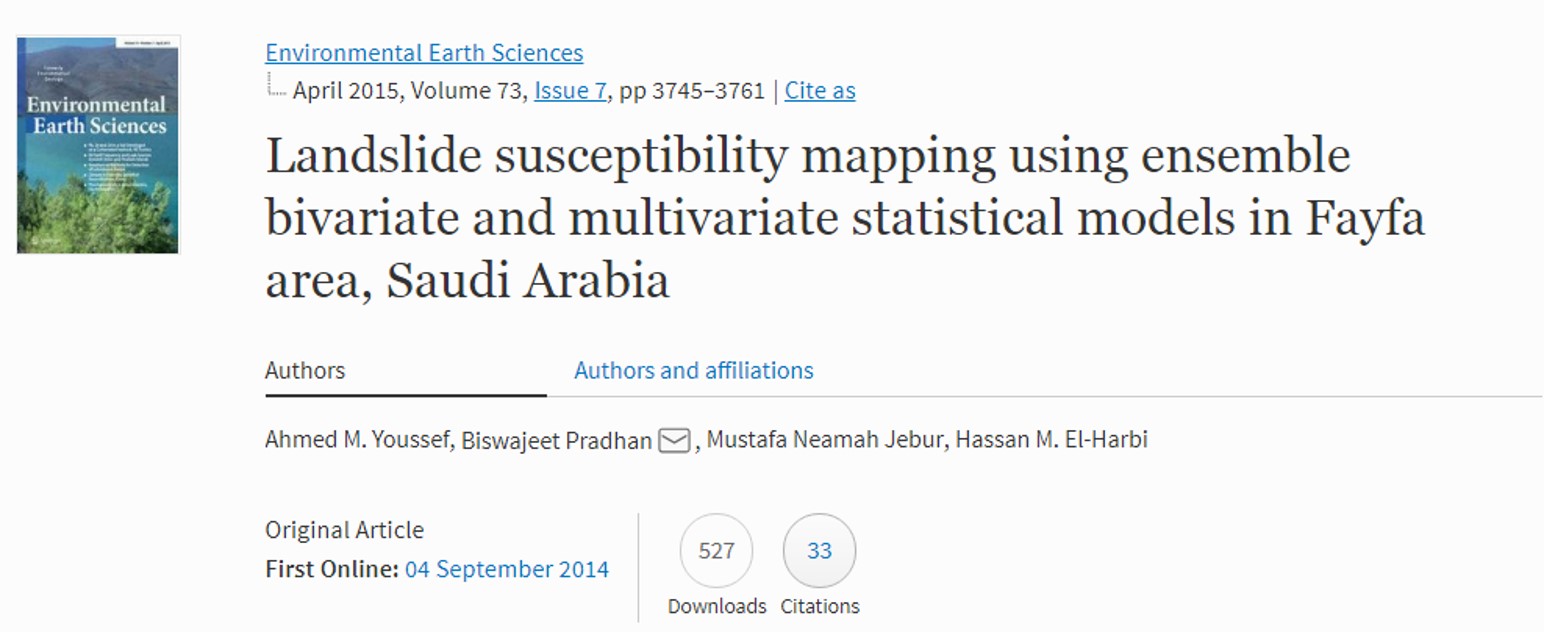A comprehensive landslide susceptibility mapping (LSM) should be produced to reduce damages to individuals and infrastructures. In the international landslide literature, various statistical methods such as logistic regression (LR) and frequency ratio (FR) have been widely used individually for LSM. However, these methods have some weaknesses. This study aims to propose an ensemble method of FR and LR to overcome their weak points. This ensemble method was applied on Fayfa area which is located in the southwest of Saudi Arabia (SA) in Jazan region. The study area covers an area of ~260 km2, and is located between latitudes 17°11′46″N to 17°21′16′′N and longitudes 43°0′30′′E to 43°11′38′′E. For LSM, an inventory map with 86 landslide occurrences was extracted from various sources. Then, the landslide inventory was randomly divided into two datasets: 70 % for training the models and 30 % for validation. The landslide conditioning factors used in the LSL include altitude, curvature, distance from wadis, distance from road, distance from fault, stream power index, topographic wetness index, soil type, geology, slope, and aspect. The produced susceptibility maps were validated by an area under the curve technique. The success rate curves of the models measure the goodness of fit of the training data, while the prediction rate curves provide the validation of the susceptibility maps, measuring the prediction capability. The validation results showed 65, 69, and 79 % success rates for FR, LR, and ensemble models, respectively. Furthermore, the prediction rates were 58, 77, and 82 % for FR, LR, and ensemble models, respectively. The proposed ensemble method can be replicated in other natural hazard studies because it can produce accurate assessment for disaster management and decision making.


